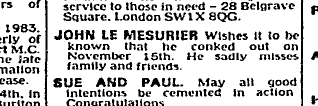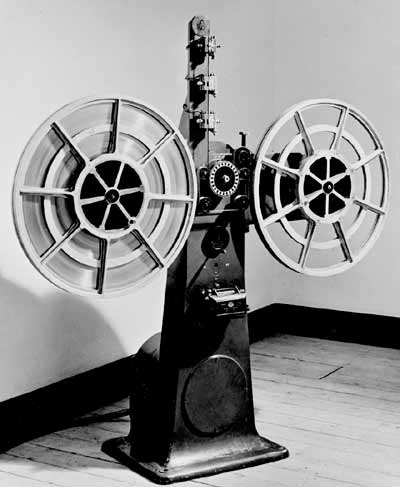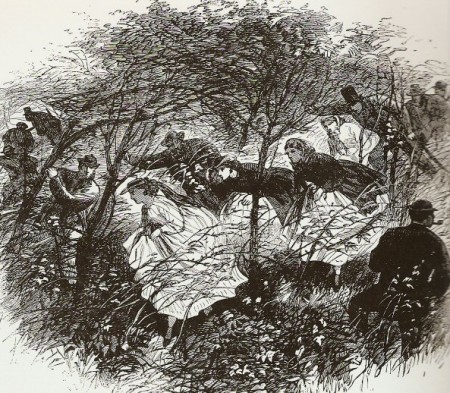One windy morning in the late 1950s, Dobson became fixated with the desire to have a type of plum named after him.
“Imagine the thrill,” he said to Marigold Chew, over breakfast, “going to the fruiterer’s and asking for a half pound bag of Dobsons!”
Marigold Chew said nothing in reply, merely casting her eye over Dobson in precisely the way a compositor might look at a pamphleteer.
Dobson had a very flimsy grasp of matters botanical, and had never grown any fruit in his life. He was ready to acknowledge that these were distinct disadvantages. If the world was ever to be enhanced by a plum called Dobson, drastic activity was required. After breakfast, putting on a pair of secondhand winklepickers, he pranced off to the kiosk by the pylon on the patch of waste ground by the sewage plant, over which loomed the immensity of Pilgarlic Tor and, above it, a sky blue and clear and without any sign of an imminent hailstorm. Unaccountably, the kiosk was shut, and not simply shut but boarded up, covered over with large rectangular panels of reinforced hardboard hammered into place with dozens of big fat nails. No signage had been pasted on to any of the panels to explain this startling state of affairs. Whenever anything changed within his familiar bailiwick, however slightly, Dobson was avid to be told about it, greedy for details, and ever on the lookout for signs and announcements and bulletins, in the absence of which he was liable to have a neurasthenic attack, and emit little cries, just like Edgar Allan Poe when he got the jitters, or the Wild Boy of Aveyron when deprived of potatoes.
On this day, however, so consumed was the out of print pamphleteer with his plum plan that he sailed on past the boarded-up kiosk, fleet in his winklepickers, and carried on along the lane abutting the sewage plant annexe, past the clown hospital and the vinegar distillery and the bottomless viper-pit, until, crossing Sawdust Bridge, he approached a tobacconist’s. Here, thought Dobson, he might find the publication he was seeking, for in addition to a range of pungent cigarettes and cigarillos and pipe tobaccos from the more benighted regions of the earth, the shop stocked a few magazines and penny dreadfuls and hastily-pasted-together prog rock fanzines, alongside the complete works of John Ruskin in pirated editions. It was quite a tobacconist’s.
As he pranced closer to its gaudy doorway, however, the pamphleteer’s path was blocked by a peasant leading an improbably numerous herd of goats to pasture. Dobson had no option but to stand and wait while goat after goat after goat after goat after goat passed slowly by. Just as our pamphleteer knew little of botany, it may be that the reader is ignorant of the goat world. Briefly, then, goats are cloven-hooved and Satanic and their milk has a peculiarly goaty flavour and they come in a number of varieties including the Nubian and the Toggenburg and the Anatolian Black and the Booted and the Fainting and the Finnish Landrace. Some such goats were among the flock that passed in front of Dobson, who sat down on a tuffet and ate some curds and whey, cartons of which he kept in his pockets as emergency snack solutions.
By the time the last of the goats clacked past, and the way to the tobacconist’s was cleared, it was lunchtime, and the shop’s shutters had been pulled down, and the tobacconist himself was fast asleep in a sort of man-cot behind his counter. Undaunted, for there were still fires in his head regarding the plum project, Dobson pressed on, beyond the swimming pool and across Yoko Ono Boulevard, skirting the Miasma of Grubbiness, past two brooks, one babbling and the other unbabbling, past a bear colony and a bee sanctuary, past a second shut tobacconist’s, until he reached Old Ma Purgative’s Newsagent & Hazardous Chemical Waste Compound. To his relief, he found it neither boarded up nor closed for lunch, and skipping past the life-sized cardboard cut-out of Jethro Tull’s Ian Anderson playing his flute while standing on one leg which Old Ma Purgative kept in the porch, Dobson entered.
“How now, Mistress P!” cried Dobson, in an unnervingly cheery tone.
“Are you a mystery shopper?” snapped back the ancient proprietress, both her face and her voice curdled with spite. She was a proper caution, and had long ago lost whatever marbles her god had given her, her god being a household one, hung on a nail at the back of the shop, wooden, with savage talons, in the shape of a crow, with vermilion plasticine blobs for eyes. It held her in thrall.
Though he was a fairly regular customer, Dobson was used to Old Ma Purgative’s forgetfulness, and he did not take umbrage at being unrecognised.
“No mystery shopper I!”, he shouted, in the foolish syntax he tended to deploy when speaking to shopkeepers, “I am but an humble wight who seeks a copy of the current issue of So You Want To Buy Or Rent An Orchard?, the weekly magazine packed with much advertising of a fruity orchard nature.”
Old Ma Purgative gawped at Dobson, waved a wand in the air, said something in rhyming couplets about frogs and toads and pies and sparrows, and essayed a little hop and skip. Her burning desire was to become a character in a fairy tale or nursery rhyme, and to frighten children. But the pamphleteer was a grown man, and he had seen these shenanigans before, so he ignored Old Ma Purgative and stepped over to the magazine rack. Various titles were shoved none too tidily into the battered wire slots of the stand, mostly publications in foreign languages or those invented by teenage science fiction enthusiasts, such as Zigbog, as spoken by the superignorant Zigbog-ra in the long-running radio serial Pie Shop Deep Space Nine.
By the time Dobson had finished rummaging, fruitlessly, through the tat, his hands were filthy, so he bought a jumbo tube of disinfectant goo before bidding Old Ma Purgative farewell. Outside the sky was black and the air was thick with pinging hailstones. Dobson scampered to a cow byre for shelter. It was empty of cows, for this was a Thursday, the day when cows in these parts were taken on excursions.
Six hours later, when the hailstorm ceased, Dobson trudged home, taking a different route, along the canal towpath, past the duckpond and the dirigible hangar and the Museum o’ Whisks, past Pang Hill Orphanage and the disgusting pit, past large imponderables and smaller enigmas, and finally up the lovely lane lined with hail-drenched foxgloves and toadflax. Marigold Chew was out, supervising some cows on a cow excursion. Dobson did not even pause to remove his winklepickers, but sat straight down at his escritoire and wrote, at one sitting, the untitled and unpublished piece which scholars have dubbed Notes Pursuant To The Unravelling Of The Pamphleteer’s Plum Plan.
One windy morning in the late 1950s, he wrote, I became fixated with the desire to have a type of plum named after me. Knowing nothing of plums, and not much about fruit in general, I hit upon the idea that by buying or renting my own orchard, I would have the leisure to experiment. In my mind’s eye, I saw myself leaping out of bed every morning, and, come rain or shine, sprinting off to my orchard, there to propagate plum trees, to study them with such rigour that before long I would know all there was to know about plums, both the minutiae and the big picture. I would have a shed in my orchard which would become the world’s finest plum library. I would spend entire afternoons peering at seeds, at first in ignorance, but gradually with ever greater perspicacity. I would dig and mulch and prune and cut. I would erect bird scarifiers and familiarise myself with the workings of a shotgun. And then one day, years hence, when so close was the resemblance between a plum and my brain that it would baffle the most expert of fruitmen, I would grow an entirely new type of plum, and I would call it the Dobson, and thus my name would be immortal.
Such was my dream. The very first step to realising it was to obtain a copy of the current issue of that most excellent magazine So You Want To Buy Or Rent An Orchard? I strode out of doors with the vigour of a man sixty years younger, plum-bedizened. As I walked, I hummed the Four Last Songs by Richard Strauss, one after another, in the wrong, but to me preferred, order. The sky was blue and clear, with no hint of hail.
Alas, my efforts to find a copy of the magazine came to naught. Then came the hail, such teeming hail as I have never seen. I sheltered for hours in a deserted cow byre, and with every ping of a hailstone upon its corrugated iron roof, the more dejected I became. Crushed by misery, I was almost tempted to the stupidity of pleading with Old Ma Purgative’s wooden household crow god. Was I such a weed that I would fall at the first hurdle? Would I abandon my plum plan simply because, unbeknownst to me, So You Want To Buy Or Rent An Orchard? had ceased publication seven years ago, around the time of, and because of, the Korean War? It pains me to say that the answer to both these questions is “Yes”. I sit here, in my squelching secondhand winklepickers, gripping my pencil like a dying man’s straw, and I peer into the future, and I know the shattering truth, that there never, ever will be a plum called Dobson.
Human weakness. The puddle of a million dreams.













 The Blattnerphone
The Blattnerphone